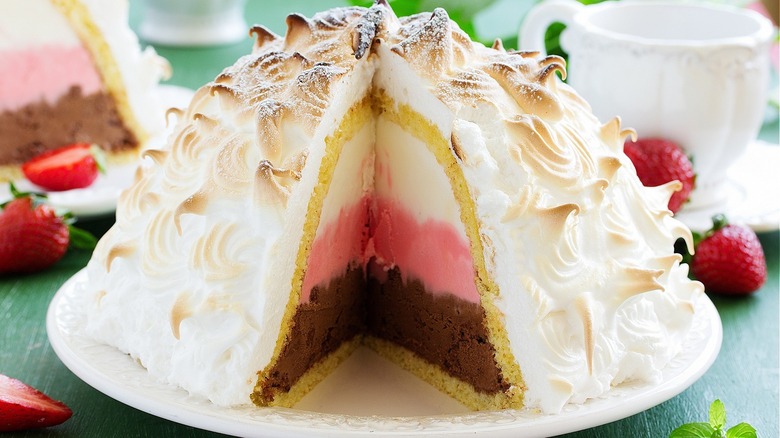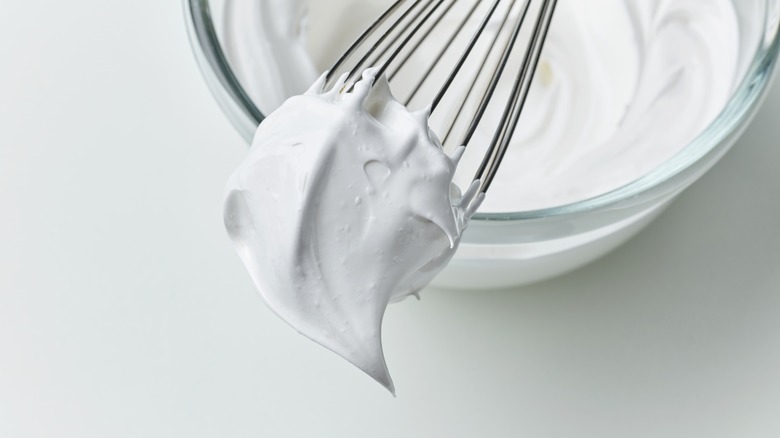The Science Behind Why Baked Alaska Doesn't Melt
The mysterious dessert known as Baked Alaska first debuted in the U.S. in the late nineteenth century. NPR shares that the exact year and person responsible for it is a little murky, but it happened at New York City's famous and upscale Delmonico's Restaurant. The dish was called "Alaska Florida" because of the contrasting combination of elements: an icy center and torched exterior.
For those who haven't tried it, Baked Alaska is a type of bombe, a French creation made of layers of ice cream and cake molded into a domed dessert. They're not as difficult to make when all of the layers are chilled, but what makes Baked Alaska seem impossible is that the whole dessert goes into the oven — and yet, when sliced, reveals a still-frozen interior of ice cream. How is this possible?
It's all thanks to the other defining feature of a Baked Alaska: the meringue. Made from egg whites and sugar whipped into stiff peaks, it's spread over the outside of the ice cream. Pastry chefs love meringue for desserts like lemon meringue pie because it can be piped into decorative swirls and peaks that brown up beautifully while baking. Meringue has another characteristic that may surprise you, though.
Meringue is like an insulated cooler
Baked Alaska would not have come to be if not for scientist and inventor Benjamin Thompson Rumford. In the early 1800s, Rumford became intrigued about the properties of meringue — not only for its sturdy structure but also for the way meringue holds up to heat and protects ingredients beneath it. He concluded that air bubbles firmly suspended in beaten egg whites create an insulating layer. For this dessert, that insulation keeps the ice cream center frozen even as the surface of the meringue is subjected to heat. It's similar to the way a cooler can sit out in the hot sun and yet the drinks inside stay nice and cold.
In order for this meringue miracle to work, however, there are some rules. The molded ice cream has to be chilled until really firm before adding the meringue. One of the cringiest moments ever of the 'Great British Bake Off" was in Season 5 when Iain's Baked Alaska ended up in the trash after another contestant removed it from the freezer and forgot about it, and the ice cream turned to liquid in the pan.
In order to keep Baked Alaska frozen, the meringue shell has to form a tight seal all the way around the ice cream center with no gaps. Finally, the heat applied to the meringue is very brief: about 5 minutes in a hot oven, or a few quick blasts of a blow torch.
It's an exciting and mind-bending dessert.

